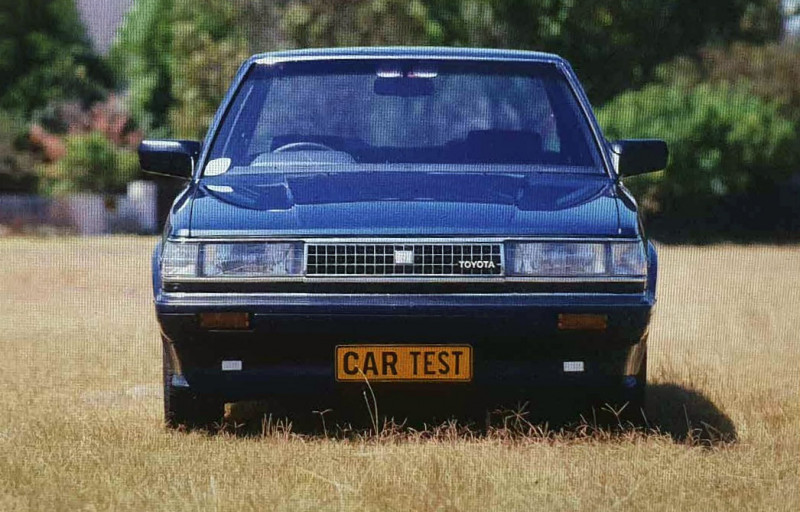Buyers’ Guide 1976-1992 Toyota Cressida

Little did we know in the 1980s that one day we would look upon the humble Cressida as a classic. It now has everything necessary to wear the accolade – and it makes for excellent everyday transport, too.
1976-1992 Toyota Cressida — Long-life bread and butter
PACKAGING
As the packaging is rather uninteresting, some history instead. These are really the third and fourth generations of this car. However, it started life as the Corona, previously covered in this series. When the Mark II Corona was released, there was a naming conflict with the Mark II Lincoln Continental, so for export purposes, the name Cressida was used. This was apparently taken from Shakespeare’s play Troilus and Cressida, written around 1602.

The styling changes over the years evolved in 1984/1985 into a shape that closely resembled the Chevrolet/Opel sixes as well as the Ford Granada before evolving further. Naturally, for the times, station wagons were an option. The top-specced sixes came with air-conditioning, power steering, electric windows and a four-speed automatic transmission that locked the torque converter at speeds over 60 km/h. Boot space was 315 litres but in our last couple of tests, this dropped to a rather disappointing 288 litres. Our 1989 test of a 3,0i AT showed standard equipment that included rouched leather upholstery, LCD instrumentation and remote-control unlocking.
POWERTRAIN
Although the range kicked off with a 66 kW 1,8-litre, most were fitted with the 4-cylinder, 2,0-litre engine offering 71 kW. The more interesting engines were the smooth sixes: a 2,0-litre, first with 71 kW, then 77 kW, a 2,4-litre with 80 kW and finally the 2,8-litre with 96 kW. The 1,8 models had a four-speed manual gearbox, but all others were five-speeds, with a four-speed automatic as an option.
Our 1983 test of the GLi-6 AT recorded an impressive fuel consumption figure of only 7,45 litres/100 km at a steady 100 km/h. Just when the public thought the Cressida was done, Toyota SA extended its life and launched the flagship 3,0i AT. This used fuel injection with a 24-valve twin-cam head to produce 140 kW and 250 N.m. Zero to 100 km/h dropped to 10,21 seconds.
SUSPENSION AND STEERING
MacPherson struts at the front and a five-link coil-spring setup was employed. Steering still used the older recirculating-ball system. Wheels were 14 inches throughout the model range. Handling was not what these sedans are about, and the ride quality was the main focus.
AVAILABILITY AND PRICES
Annual sales when new were between 1 000 and 3 000 right through the lifespan. Our advice is to sift through the classifieds to find a one-owner example that has been looked after and garaged. Check service records and don’t be afraid to pay a decent price. You won’t be disappointed. The list we perused ranged from R25 000 to R150 000 and most were in impressive condition. If you are looking for a really clean, rustfree example, check under the classic and vintage sections. If you can find a 3,0i Cressida, we would suggest buying it.
INTERESTING FACTS
Many owners aspired to Mercedes-Benz status, but realised the less exotic Toyotas provided a similar level of reliability and a decent driving experience with a considerable saving. What surprised us in our search was just how many Cressidas for sale had been looked after just as one would a much more expensive vehicle.
Clearly, most were well maintained, always garaged and treated like one of the family. Many years ago, I did some maintenance on a straight-six Cressida and was shocked at the state of the cambelt. Full of cracks, it had probably never been changed for well over a decade, or even from new. The thing is, it had simply refused to break under the strain … that’s quality engineering.
The Cressida’s out-of-the-box pricing was around half that of Mercedes-Benz models, proving their excellent value-for-money popularity. It took a while to add up all our Toyota Cressida tests over the full 16 years; a total of 32.
- Clean, straight lines for the last version in 1990.
- No rev counters yet, just basic, clear necessities.
- Ubiquitous and much copied 3Y four-cylinder engine with 65 kW.
- Boot capacity was not outstanding.
- Taillamps now becoming rather oversized.
- Slide controls for ventilation were de rigueur for many years. Note the “legendary” Toyota digital clock.
SPOTTED IN THE CLASSIFIEDS
Toyota Cressida GLE,
1984, blue, 175 000 km,
R69 950
Toyota Cressida 2,0 GL,
1984, blue, 205 000 km,
R55 000
Model: Toyota Cressida GLi-6 AT
- 0-62mph 0–100 km/h: 15,4 sec
- Top speed: 156 km/h
- Max Power: 71 kW
- Max Torque: 158 N.m
- Fuel index: 8,60 L/100 km (at 100 km/h)
- Price: R15 050
- CAR test: July 1983 and 31 others

